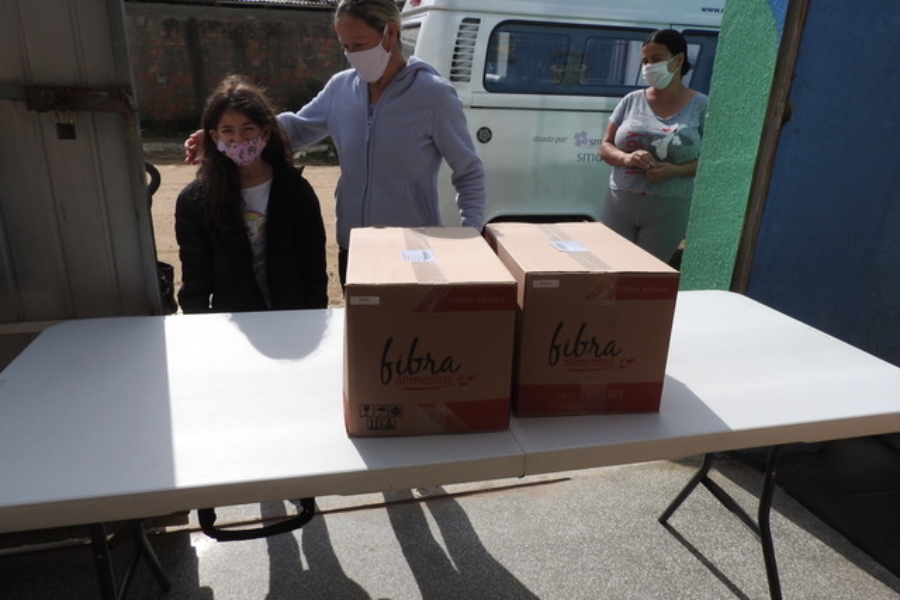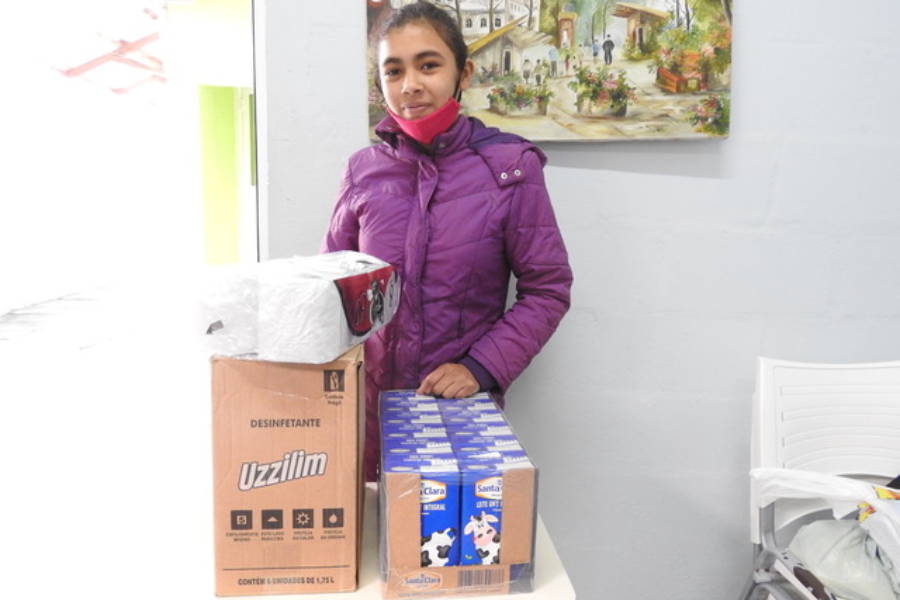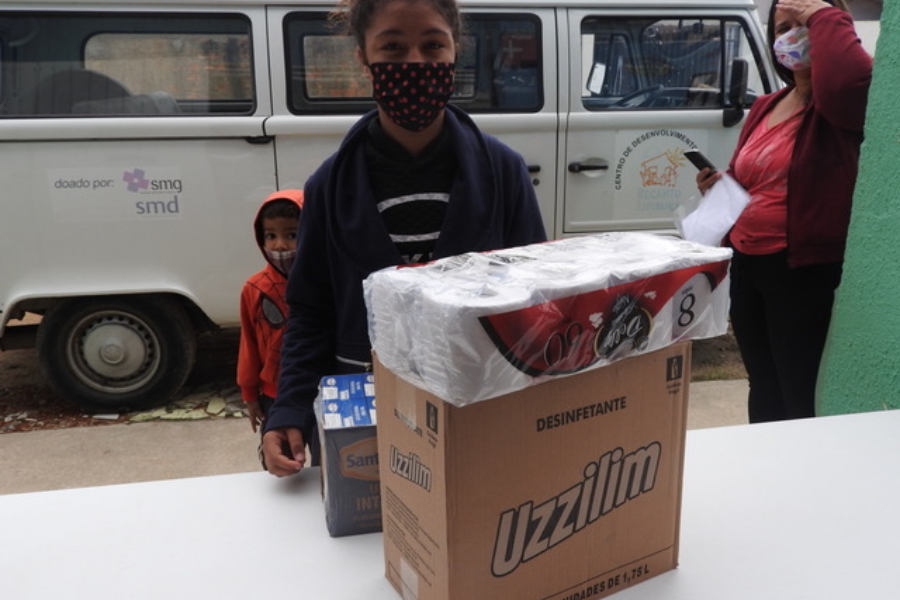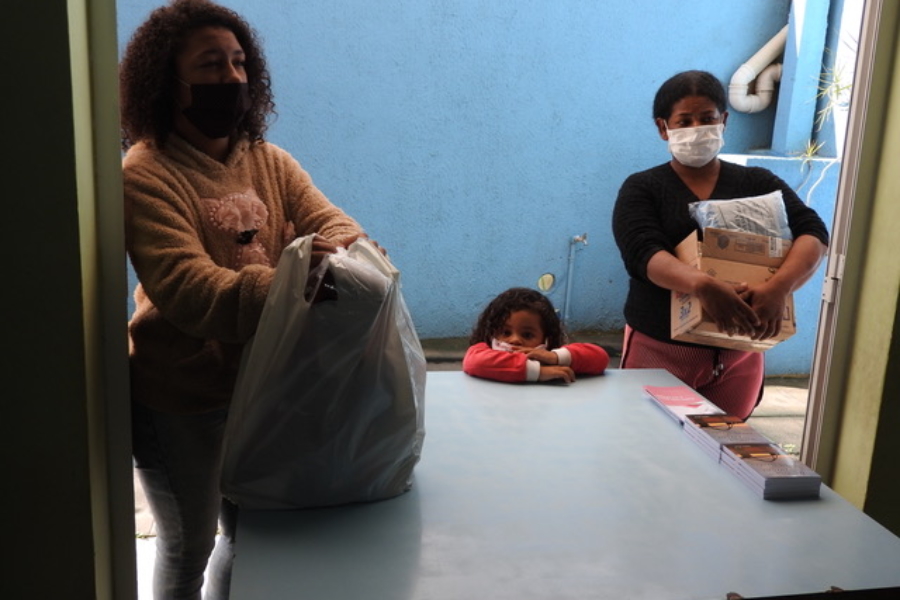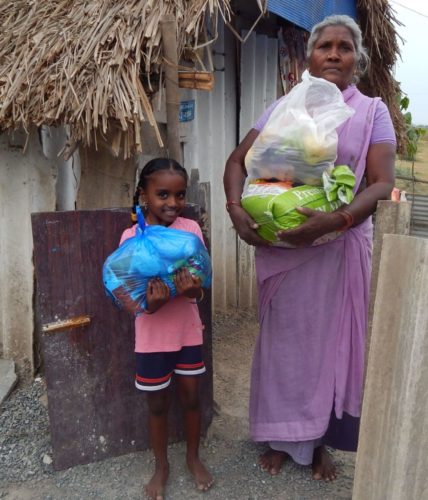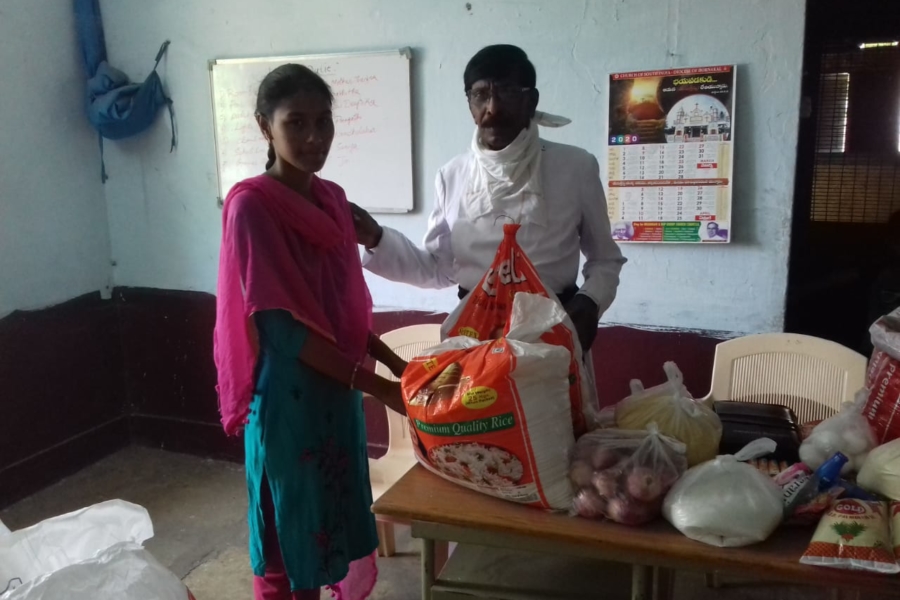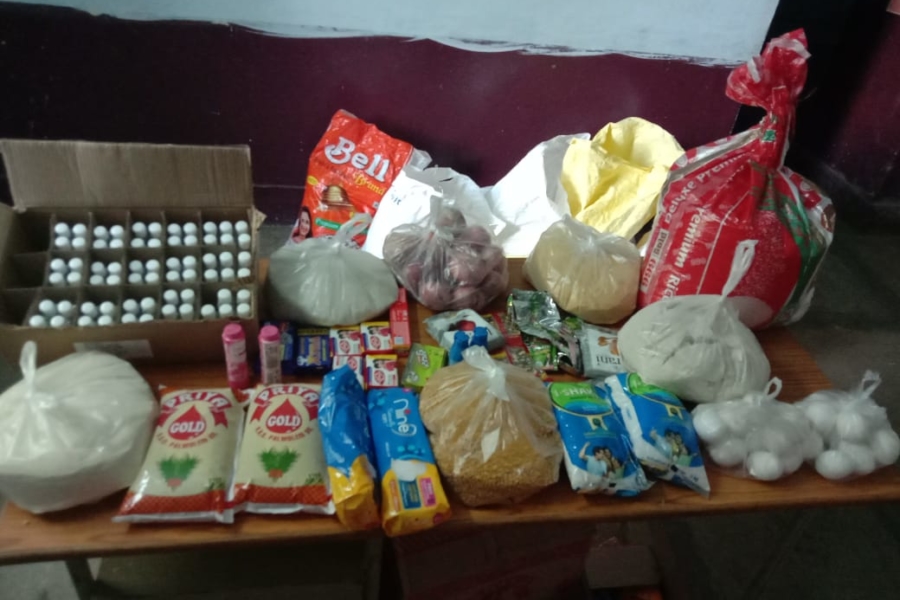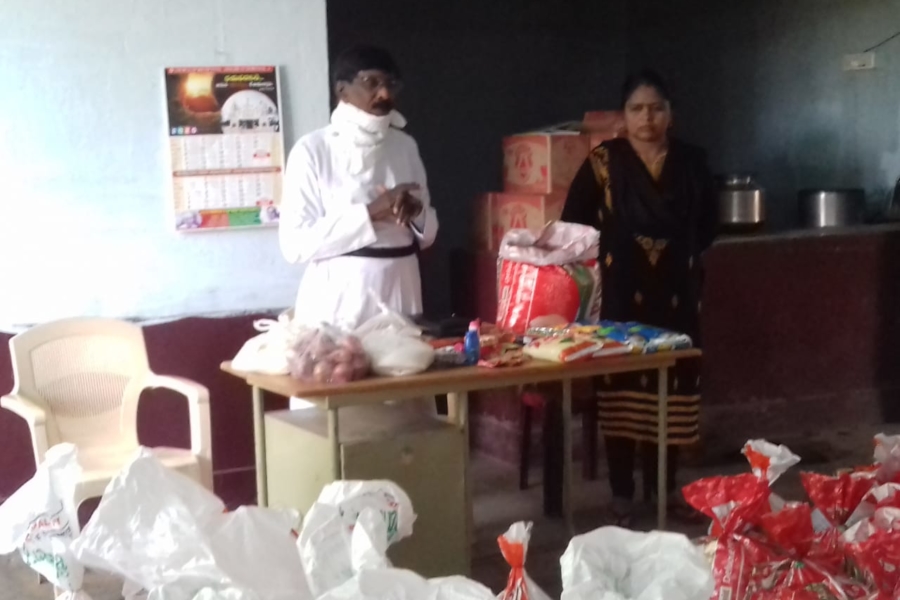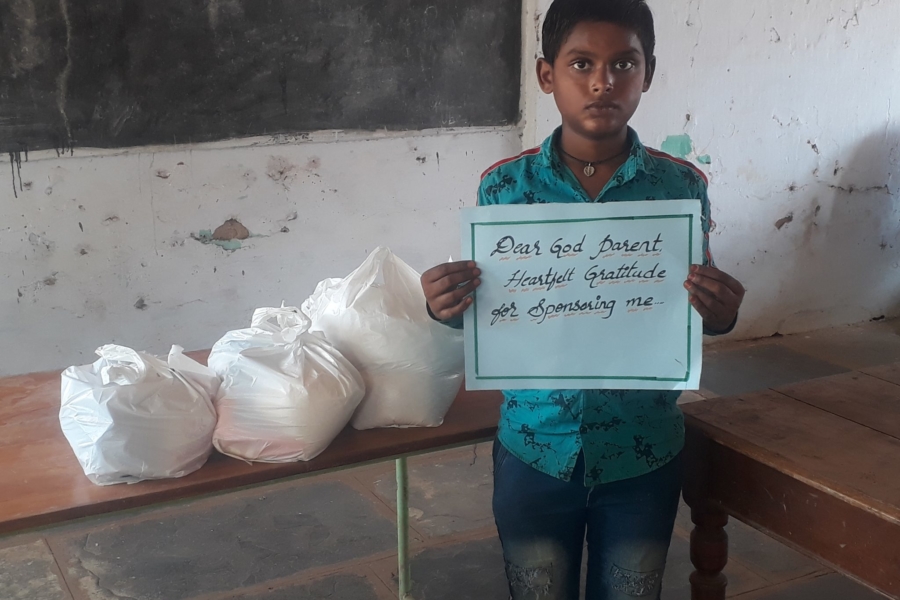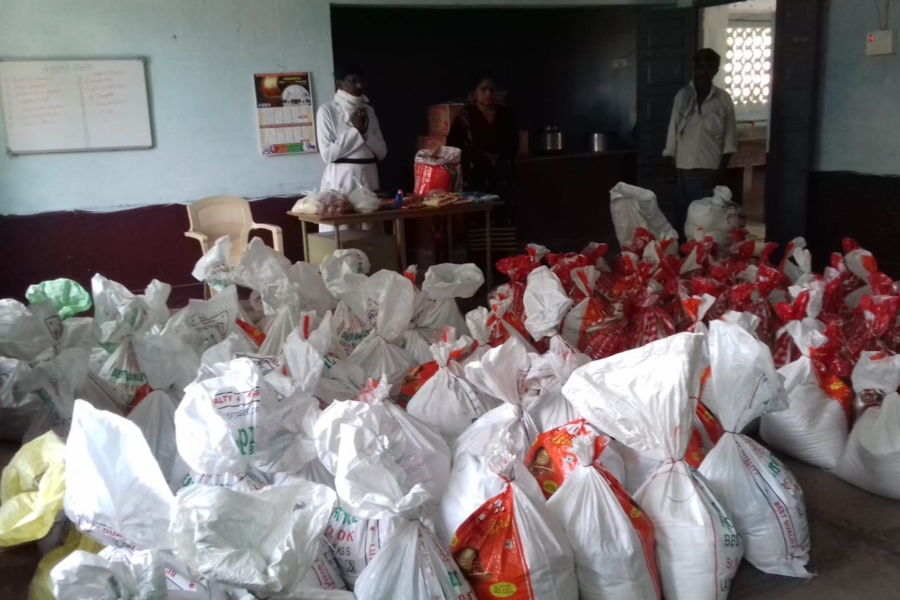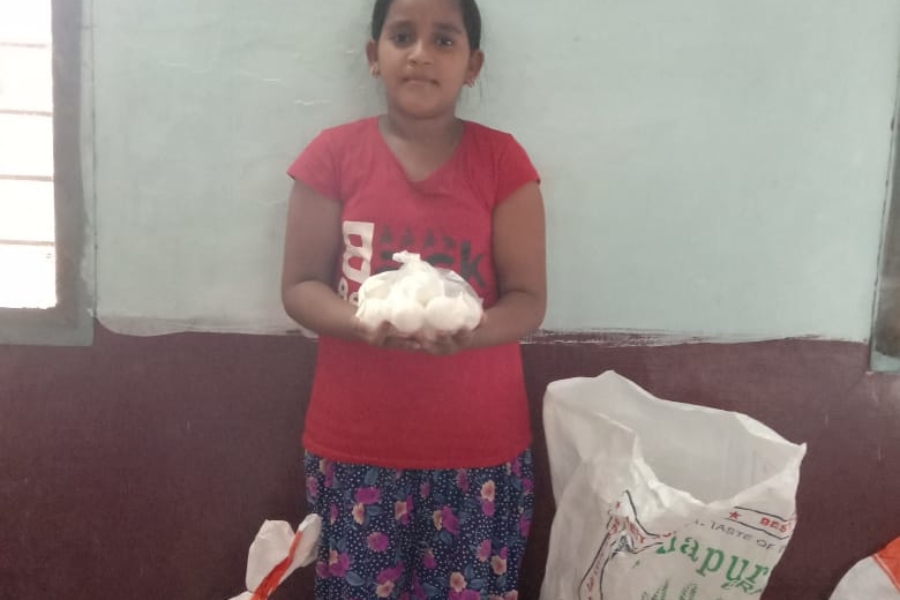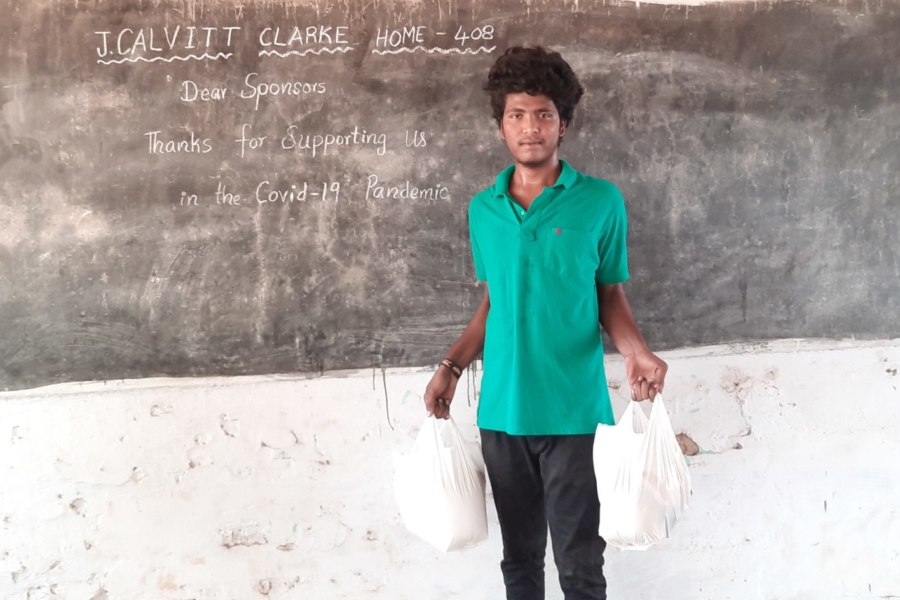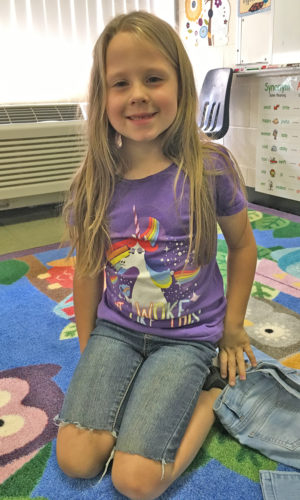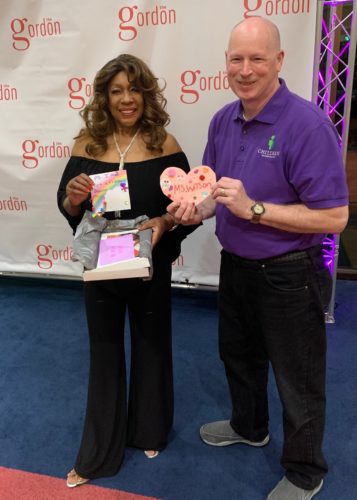Although much of the world is living in some type of isolation for the foreseeable future, the support from our sponsors helps our sponsored children and their families feel loved and taken care of in these uncertain times.
Our volunteer coordinator at our affiliated project, the Recanto Esperança Center in Brazil, writes to us about how the support of our donors is making an impact on children in need.
Although much of the world is still living in some type of isolation for the foreseeable future, the support from our sponsors helps our sponsored children and their families feel loved and taken care of in these uncertain times.
“We are fine, still in isolation. Thanks to you and the sponsors, we can buy food basket items and hygiene products for children. Many families are without income and are very grateful for this help.
Last week we launched a milk campaign, and we have already achieved a lot. We will continue to provide as much as we can for the families, as we probably need to help them for a long time to come.
Thank you so much for everything you are doing to help children in our program at this time.”
About Brazil
Brazil is the fifth-largest country in the world – both geographically and in terms of population. It is truly massive, sharing borders with every other country in South America except for Ecuador and Chile. The Amazon rain forest — recognized for having the greatest biological diversity on the planet — sprawls over the country’s northern half, with rugged mountains to the south. Despite its wealth of natural resources and beauty, Brazil suffers from staggering poverty, rising inflation, unemployment, and lack of social development.
About our affiliated projects
Recanto Esperança
Curitiba-Paraná, Brazil
Located in the Urebaba District of Curitiba, where many families lack the resources to provide for their children’s education and basic needs, Recanto Esperança is a non-profit organization whose mission is to support children and their families to rise above the difficult socio-economic circumstances from which they come.
CARITAS-Novo Milênio Center
Lages – Santa Catarina, Brazil
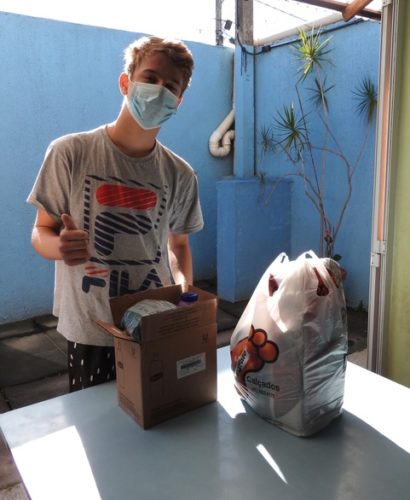
Thanks to donations to our COVID-19 Response Fund, sponsored children in Brazil are receiving food and hygiene items regularly.
In the city of Lages, located in the south of Brazil, many families are forced to live in urban developments like Novo Milênio, which lack electricity, drinking water, and even sewage service. Job opportunities here are extremely limited, and area public schools are ill-equipped to provide a quality education to the ever-increasing number of students. Children here roam the streets, sad, neglected, and vulnerable to the threats of crime, drug abuse, and worse. The plight of these children aroused the compassion of CARITAS, a non-profit organization run by the Catholic Church. As a result, the CARITAS Center in Novo Milênio was established to help these children and community members.
Casas Lares–ACRIDAS
Curitiba, Brazil
Curitiba’s city slum neighborhoods inspired ACRIDAS (Christian Association of Social Assistance), a non-profit organization of business and civic leaders, to establish several orphanages to assist these deserving young ones. Many children are placed in Casas Lares–ACRIDAS by court order, to protect them from the threats of abuse, drugs, violence, and malnutrition. Casas Lares–ACRIDAS serves as a safe haven, offering underprivileged and vulnerable children the opportunity to live in a safe home environment.
Nossa Senhora Das Graças
Lagas, Brazil
The plight of children living in Lagas aroused the compassion of a charitable civic organization called Nossa Senhora Das Graças (Our Lady of the Graces) who founded the Nossa Senhora Das Graças daycare center to provide assistance, support, and hope to the needy children in this region of Brazil.
CADI CENTER
Fazenda Rio Grande – Curitiba, Brazil
In Fazenda Rio Grande, a town on the outskirts of Curitiba in southern Brazil, many families struggle to afford even the most basic of needs, let alone education-related expenses for their children. What began in 1994 as a soccer school to motivate and assist the children of these low-income families has now become CADI (Centro de Assistência e Desenvolvimento Integral) – a national nonprofit that maintains a center of holistic development in Fazenda Rio Grande. The CADI center’s mission is to motivate and equip these deserving children with an education and the opportunity to break the cycle of poverty.
***
HOW DO I SPONSOR A CHILD IN BRAZIL?
You can sponsor a child in Brazil in one of three ways: call our office at 1-800-538-5381 and speak with one of our staff members; email us at sponsorship@children-inc.org; or go online to our donation portal, create an account, and search for a child in Brazil that is available for sponsorship.

